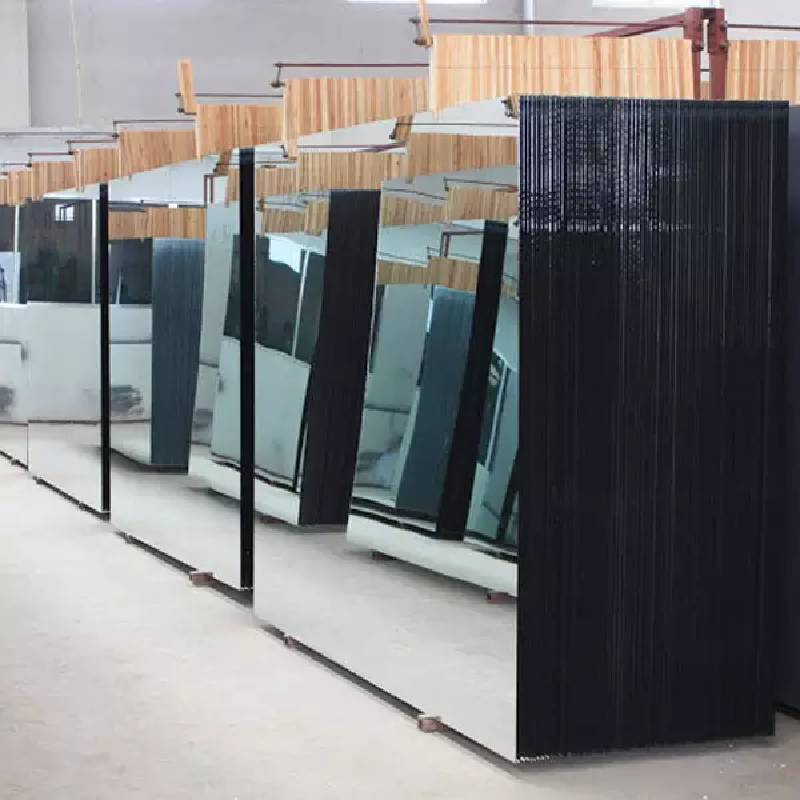The Future of Glass Transparent to Opaque at the Touch of a Button
In today’s rapidly evolving technological landscape, innovation seems to know no bounds. Among the remarkable materials redefining our daily lives is a special type of glass that can seamlessly switch from transparent to opaque, revolutionizing various industries, including architecture, automotive, and even personal electronics. This advanced glass technology presents a myriad of possibilities, enhancing privacy, energy efficiency, and aesthetic appeal.
The Future of Glass Transparent to Opaque at the Touch of a Button
One of the most significant applications of this smart glass is in architecture and building design. For instance, in modern offices and homes, facades made of this technology can shift their hue based on the time of day, allowing for natural light to seep in when needed and providing privacy when required. Imagine a boardroom where, with a simple touch of a button, the glass walls can become frosted, shielding sensitive discussions from prying eyes. This adaptability not only boosts privacy but also contributes to energy efficiency, as it can reduce the need for artificial lighting during the day.
glass that can turn opaque
Furthermore, the automotive industry is exploring the possibilities of this technology for vehicle windows and sunroofs. By incorporating smart glass, car manufacturers can offer drivers enhanced comfort and security. For example, a driver can transition a sunroof from clear to opaque to block out intense sunlight or ensure the privacy of passengers without the need for traditional blinds or tints. This feature not only adds a luxurious feel to the driving experience but also helps in temperature regulation within the vehicle, thereby reducing reliance on air conditioning.
In personal electronic devices, this technology is making strides as well. With the rise of foldable smartphones and tablets, having a screen that can transition from clear to unclear could protect sensitive information from onlookers in crowded spaces. Imagine being able to shield your screen at a café or on public transport at the press of a button—this would not only enhance privacy but also provide peace of mind for users on the go.
Despite the myriad benefits, the development of opaque-switching glass is not without challenges. Cost remains a significant barrier, as the technology is still relatively expensive to produce compared to traditional glass. Moreover, the need for consistent power supply and potential energy consumption concerns also come into play. However, researchers are working diligently to address these challenges, aiming to make switchable glass a staple in everyday applications.
In conclusion, glass that can transition from transparent to opaque represents a landmark shift in material technology, offering functional and aesthetic advantages across various domains. As developers continue to refine this innovative glass, its integration into architecture, automobiles, and personal devices will likely grow, leading to enhanced user experiences. The future glimmers with potential, as we stand on the brink of a world where our environments can be transformed with mere button presses—the only limit being our imagination.
 Afrikaans
Afrikaans  Albanian
Albanian  Amharic
Amharic  Arabic
Arabic  Armenian
Armenian  Azerbaijani
Azerbaijani  Basque
Basque  Belarusian
Belarusian  Bengali
Bengali  Bosnian
Bosnian  Bulgarian
Bulgarian  Catalan
Catalan  Cebuano
Cebuano  Corsican
Corsican  Croatian
Croatian  Czech
Czech  Danish
Danish  Dutch
Dutch  English
English  Esperanto
Esperanto  Estonian
Estonian  Finnish
Finnish  French
French  Frisian
Frisian  Galician
Galician  Georgian
Georgian  German
German  Greek
Greek  Gujarati
Gujarati  Haitian Creole
Haitian Creole  hausa
hausa  hawaiian
hawaiian  Hebrew
Hebrew  Hindi
Hindi  Miao
Miao  Hungarian
Hungarian  Icelandic
Icelandic  igbo
igbo  Indonesian
Indonesian  irish
irish  Italian
Italian  Japanese
Japanese  Javanese
Javanese  Kannada
Kannada  kazakh
kazakh  Khmer
Khmer  Rwandese
Rwandese  Korean
Korean  Kurdish
Kurdish  Kyrgyz
Kyrgyz  Lao
Lao  Latin
Latin  Latvian
Latvian  Lithuanian
Lithuanian  Luxembourgish
Luxembourgish  Macedonian
Macedonian  Malgashi
Malgashi  Malay
Malay  Malayalam
Malayalam  Maltese
Maltese  Maori
Maori  Marathi
Marathi  Mongolian
Mongolian  Myanmar
Myanmar  Nepali
Nepali  Norwegian
Norwegian  Norwegian
Norwegian  Occitan
Occitan  Pashto
Pashto  Persian
Persian  Polish
Polish  Portuguese
Portuguese  Punjabi
Punjabi  Romanian
Romanian  Russian
Russian  Samoan
Samoan  Scottish Gaelic
Scottish Gaelic  Serbian
Serbian  Sesotho
Sesotho  Shona
Shona  Sindhi
Sindhi  Sinhala
Sinhala  Slovak
Slovak  Slovenian
Slovenian  Somali
Somali  Spanish
Spanish  Sundanese
Sundanese  Swahili
Swahili  Swedish
Swedish  Tagalog
Tagalog  Tajik
Tajik  Tamil
Tamil  Tatar
Tatar  Telugu
Telugu  Thai
Thai  Turkish
Turkish  Turkmen
Turkmen  Ukrainian
Ukrainian  Urdu
Urdu  Uighur
Uighur  Uzbek
Uzbek  Vietnamese
Vietnamese  Welsh
Welsh  Bantu
Bantu  Yiddish
Yiddish  Yoruba
Yoruba  Zulu
Zulu 

